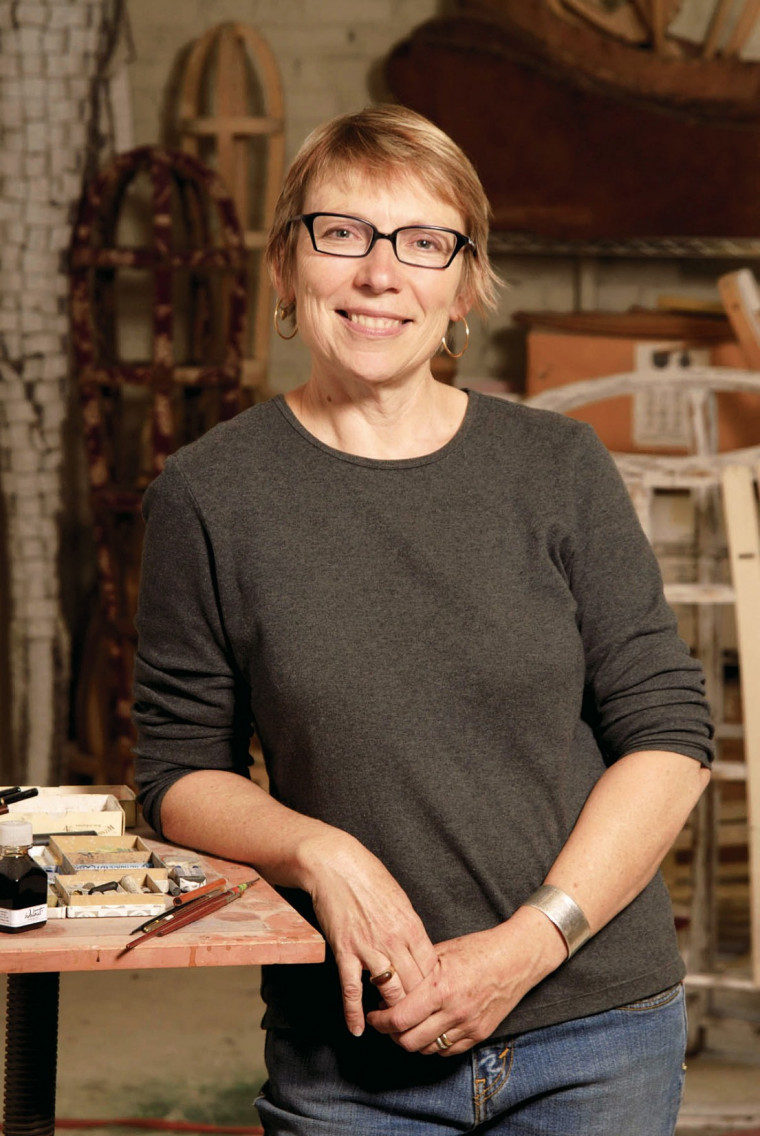Artist of Form–and Substance
Open gallery

It was an unusual mime who sparked Christine Bourdette’s fascination with the human form.
“Unlike Marcel Marceau, Franz Reynders taught an insistent style of mime–very abstract and conceptual,” says Bourdette.
Reynders, who taught in Lewis & Clark’s theatre department, was a charismatic force on campus, remembers Bourdette. Although she never studied mime with him, she was captivated by a drawing class he offered. It focused on costume design, using a highly theatrical approach with the gesturing body as a medium.
Bourdette began her career as a painter, but quickly turned to sculpting after noticing that most of her paintings involved spatial concepts. Influences in the early days came from such widely divergent sources as minimalism and folk art.
Over the last three decades, she has become one of the most accomplished sculptors in the Northwest. Her pieces have been included in many private and public collections, including the Portland and Tacoma art museums, as well as public art installations in Portland, Seattle, and Phoenix. An enthusiastic collaborator, she has also worked with a number of choreographers, filmmakers, and other artists.
Bourdette’s consummate dedication to craft and skillful use of found and salvaged materials–including wood, leather, rawhide, rubber, plastic, fabric, and metals–have garnered respect from her clients and the art community. Wit, humor, and intelligence inform her work.
“The compelling issue that has driven my work for over 20 years has been the paradox of the human condition: its ornery, goofy illogic and the fact that we are all in this together,” she says. “My recurring themes include mortality, transformation, mobility, and deception. I love literature and have often been inspired by myths and fairy tales and the ways in which archetypal stories have come to bear as we solve our problems and find our way through life.”
Riddles, Bunnyheads, and Asides, Bourdette’s 2008 exhibition at the Art Gym at Marylhurst University, featured more than 50 sculptures and 6 drawings, created from 1987 to 2008. The exhibition included human figures–such as the Squatting Melissas, influenced by her travels in Asia–as well as anthropomorphized bunnies, birds, and elephants. All provided rich commentary on the human condition, in a myriad of quizzical, humorous, provocative ways.
Over the years, the financial rewards associated with public art projects have allowed Bourdette to support herself as an artist. For example, Time Flies,a “sequence of hurrying, swarming, flying, and time-related images” (porcelain enamel on steel panels), is on display at the Portland Airport Station, which is part of the Tri-Met MAX Light Rail system.
“I love the collaborative nature of public art–dovetailing on the work of architects, engineers, and government agencies,” she says.
Most recently, she has turned her attention back to drawing–specifically to the subject of maps. She’s enamored with the historical representation of places that are at once literal and abstract, shapes of countries and towns, and how people live and behave in community.
“I love that once a work is complete, I throw it out there and see how people react,” says Bourdette. “I believe in ambiguity and welcome an array of reactions.”
–by Pattie Pace
More L&C Magazine Stories
Lewis & Clark Magazine is located in McAfee on the Undergraduate Campus.
MSC: 19
email magazine@lclark.edu
voice 503-768-7970
fax 503-768-7969
The L&C Magazine staff welcomes letters and emails from readers about topics covered in the magazine. Correspondence must include your name and location and may be edited.
Lewis & Clark Magazine
Lewis & Clark
615 S. Palatine Hill Road MSC 19
Portland OR 97219

